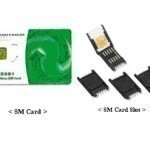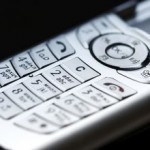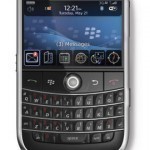A CLEC, or Competitive Local Exchange Carrier, is a type of telecommunications provider that was formed after the breakup of AT&T. CLECs are usually smaller telecommunications providers that compete with ILECs, or Incumbent Local Exchange Carriers, which were already in place before AT&T’s separation. While CLECs generally provide the same services as ILECS for less, they usually lease their lines from existing ILECs in the area. How A CLEC Works While a CLEC generally leases its lines from an ILEC in the area, it may also rent them out to Read More
IMSI (International Mobile Subscriber Identity)

An IMSI (International Mobile Subscriber Identity) is a unique code used to identify an individual user on a GSM or UMTS network. The IMSI is a 64-bit number which is usually represented as 15 decimal digits. An IMSI consists of three components: Mobile Country Code (MCC) (3 digits) Mobile Network Code (MNC) (2-3 digits) Mobile Subscriber Identity Number (MSIN) The Mobile Country Codes and Mobile Network Codes are listed at MCCList. In GSM networks, the IMSI is stored in the Subscriber Identity Module (SIM). In CDMA networks, it is stored Read More
Cell Phone Manuals
Here is a guide to where you can download cell phone manuals for some of the most popular cell phone brands. Manufacturer web sites usually require selecting a phone before showing a link to the manual. Instructions are provided to help you navigate to the manuals. BlackBerry Cell Phone Manuals To download a manual simply click on the Getting Started Guide or User Guide link for the desired model. Firefly User Guide for Parents LG Cell Phone Manuals To get a manual choose a carrier in the Mobile Phones Read More
LATA (Local Access and Transport Area)
A LATA (Local Access and Transport Area) is a geographical and administrative area that is the responsibility of an LEC (Local Exchange Carrier). It is an expression used in U.S. telecommunications law. LATA borders are outlined around markets, and not essentially along present state, province, or even area code borders. Several LATAs traverse over state borders, such as those for the New York metropolitan area and Greenwich, Connecticut; Chicago, Illinois; Portland, Oregon; and areas between Maryland, Virginia, and West Virginia. Area codes and LATAs do not essentially share borders. Several Read More
* (LASS) Codes
LASS codes are numbers you enter on your telephone touch-pad to access special features of the telephone system. The most well-known LASS codes are *67 to toggle Caller-ID blocking and *69, for Call Return. Local Area Signalling Services (LASS) and Custom Calling Feature Control Codes: Service Tone Pulse Notes Assistance/Police 12 n/a [1] Cancel forwarding 30 n/a [C1] Automatic Forwarding 31 n/a [C1] Notify 32 n/a [C1] [2] Intercom Ring 1 (..) 51 1151 [3] Intercom Ring 2 (.._) 52 1152 [3] Intercom Ring 3 (._.) 53 1153 [3] Extension Read More
Prepaid Cell Phones vs Contract Phones

Prepaid cell phones are mobile phones that are not associated with a long term contract and, therefore, do not incur the overage charges and late fees associate with contract plans. Prepaid cell phones are paid before the mobile service is activated on a monthly or “pay-as-you-go” basis and are deactivated when the service term expires if the customer does not add more money to his/her account. What Are Contract Phones? Contract phones are the most popular type of mobile phone and are associated with a long term contract. The Read More
PBX (Private Branch eXchange)
A PBX (Private Branch Exchange) is a small telephone switch that a company or organization owns. These organizations purchase PBXs to reduce the total number of telephone lines they need to lease from the telephone company. Without a PBX, a company has to lease one telephone line for every employee with a telephone. With a PBX system, the company only needs to lease as many lines from the telephone company as the maximum number of employees that will be making outside calls at one time. This is usually around 10% Read More
How to Block a Phone Number
With the increase in global communications, the need for phone users to block a phone call has increased. The reasons for blocking a phone call vary. There are a number of easy ways to block incoming calls. What Types of Phone Calls Do People Block? It really depends on the person. The reasons for blocking phone calls can range from keeping known telemarketers from calling your home to keeping ex-spouses or significant others from harassing you or your new spouse. Although the National Do Not Call Registry (NDNCR) has been Read More
How to Restore a Blackberry to Factory Settings

A Blackberry is a “smartphone” that integrates a phone, media player, email client, web browser, camera, and personal digital assistant (PDA) in a single device. It has many purposes and allows users to perform a number of tasks such as creating notes, accessing the Internet, and scheduling events. Blackberry phones represent over 14% of the world’s smartphones and over 500 mobile service providers in 91 countries support them. Features The Blackberry’s main function is to provide portable email access to its user. Blackberry phones also provide the user with Internet Read More
Phone Phreaking
Phone phreaking is the act of gaining illegal access to resources of telecom networks for fun or malicious activity. Before computer hacking took over, phreaking was the dominant underground tech activity. Some phone phreakers just wanted to understand how telecom infrastructure worked. Others wanted to make free long distance phone calls. As voice and data networks continue to merge, phone phreaking represents a much more dangerous threat as phreakers can gain back door access to corporate networks through unsecured modems and steal data, launch attacks and generally wreak havoc on Read More


Share on: